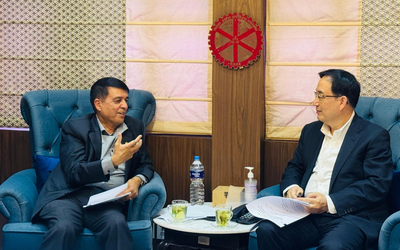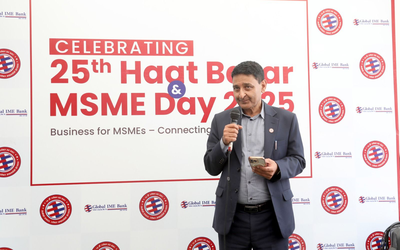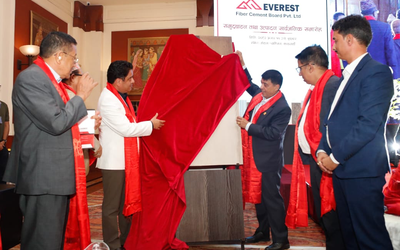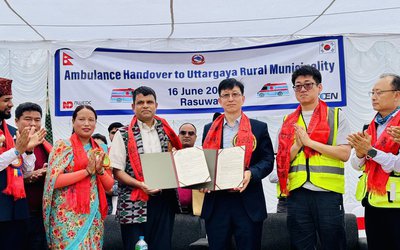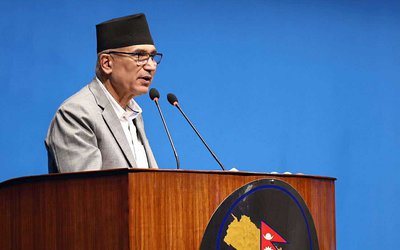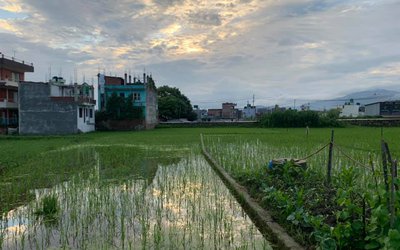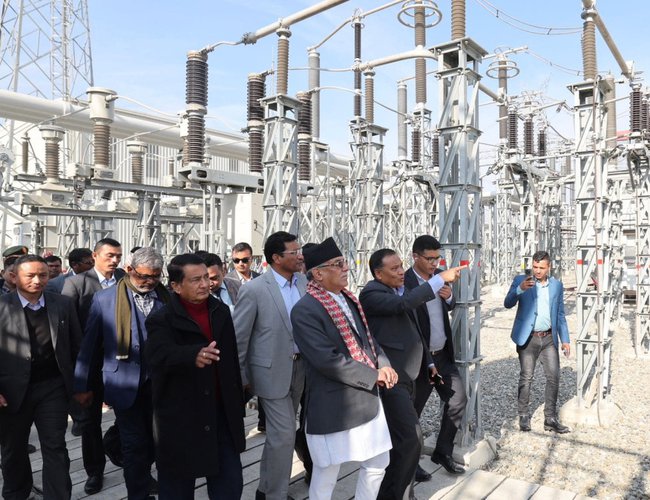
Prime Minister Pushpa Kamal Dahal 'Prachanda' has inaugurated the Inaruwa substation. Inaruwa substation is considered one of the important projects for strengthening power transmission and distribution systems.
Prime Minister Prachanda opened the 400 kV capacity Inruva substation built in Bhokraha Narsingh Rural Municipality-4 of Sunsari to strengthen the electricity transmission and distribution system within the country.
The country's second-largest substation based on the Gas Insulated System (GIS) was charged in the second week of October.
Inaruwa substation, which cost 4 billion is Nepal's second largest 400 kV capacity, based on gas insulated system (GIS), has been put into operation last week.
Two substations of 4000 and 220 kV have been constructed in Inaruwa. Under the National Electricity Development Decade Program, a 400 KV substation has been constructed from Hetaunda, Dhalkebar Inruva 400 KV Substation Expansion Project with the joint investment of Nepal Government and Nepal Electricity Authority.
A substation of 220/132/33 KV was constructed under the Nepal-India Electricity Transmission and Trade Project with the investment of the government and the authority and the concessional full loan of the World Bank. The cost of 400 and 200 kV substations is about three billion 83 million rupees.
The 400/220 kV Inruva Substation constructed under the Hetaunda-Dhalkebar-Inruva 400 KV Substation Expansion Project has three power transformers of 315 MVA capacity. The capacity of which is 945 MVA. Similarly, there are two power transformers of 220/132 kV, 160 MVA capacity and 220/33 KV, 63 MVA capacity.
After the construction of Inruwa-Dhalkebar 400 kV transmission line is completed, around 4000 megawatts of electricity can be exchanged from Inruwa substation. Inaruwa-Dhalkebar transmission line is currently being pulled.
In addition, arrangements have been made for local electricity supply from substations through 132 and 33 kV transmission and distribution lines. The substation has been built in such a way that it can be further expanded as per the need in the future.
The electricity generated from the hydropower projects constructed/to be constructed on the Arun and Tamor rivers and their tributaries will be connected to the Inruva substation through the Koshi Corridor 220 kV transmission line.
The construction of the Inruwa-Basantapur-Tumlingtar section of the Koshi corridor has been completed, while the Basantapur-Dhungesanghu section is under construction. Similarly, the Tumlingtar-Shetalpati 220 kV transmission line project is also under construction. Construction of Arun Hub-Inruwa 400 KV transmission line has been proposed.
In 2075, a contract was signed with the Indian company Siemens Limited for the construction of Inruva 400 kV substation. In 2075, a contract was signed with a consortium of Indian companies Siemens and Telmos for the construction of a 220 kV substation. In addition, a contract agreement was signed with the Indian company TBEA Energy for the supply and installation of 220/132 kV transformers in November 2077.
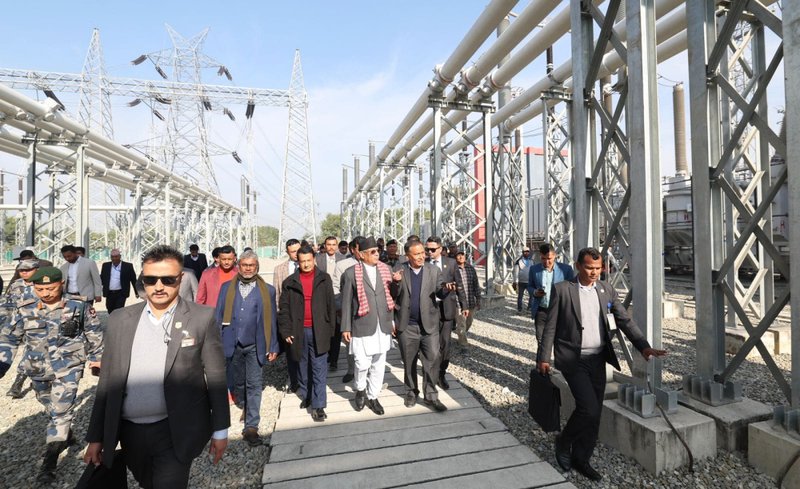
Design and construction supervision of 400 kV substation was done by NEA Engineering Company. The consultants for the 220 substations were Power Grid Corporation of India Limited and NEA Engineering Company.
।At the opening ceremony, Prime Minister Prachanda said that with the inauguration of the substation capable of supplying about 4,000 megawatts of electricity, the background for increasing the quality and reliability of electricity transmission and distribution in the region has been prepared and a new chapter has been added to the success journey of the government's Bright and Prosperous Nepal Program.
He said that the completion of the construction of such large-scale infrastructures has given a message of hope when there is only cultivation and talk of despair because there is nothing in the country.
Prime Minister Prachanda expressed his belief that in addition to the supply of electricity to the national transmission system through the substation, the voltage of the region will be improved and the electricity supply will be reliable and of good quality.
Shakti Bahadur Basnet, Minister of Energy, Water Resources and Irrigation, said that in the past 78 years of hydropower development in Nepal, only 150 megawatts of electricity was produced, but the current addition of 500 megawatts of electricity in one year confirms the country's progress.
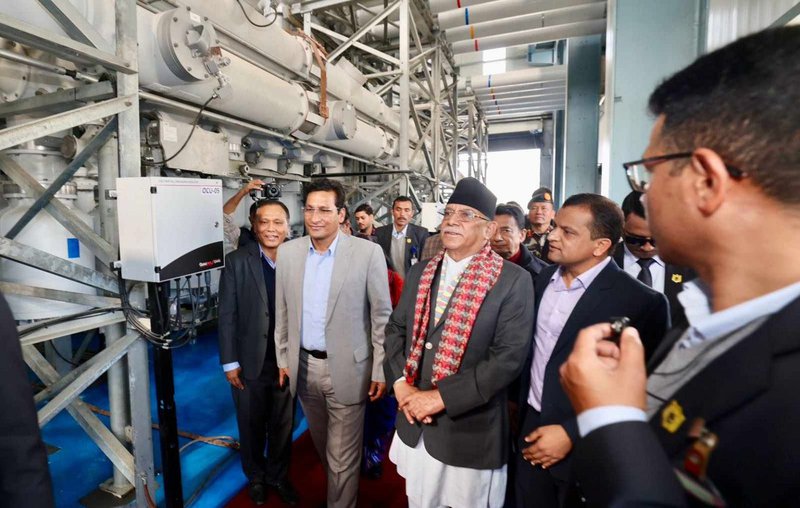
Mentioning that there is a reliable base that can produce about 30,000 megawatts of electricity within the next ten years, Minister Basnet said that additional arrangements are being made legally to address the right-of-way problems and the demands of the locals in the construction of transmission lines.
The Chief Minister of Koshi Province, Kedar Karki, expressed his belief that the power supply problem being faced by the industrialists of this province will be solved after the substation comes into operation. He said that Koshi province has started human development not only materially but also by keeping the private sector as a part of the government.
Sunsari-4 Federal Member of Parliament Gyanendra Bahadur Karki mentioned that it is a matter of happiness and pride that the substation is operational and said that it will play an important role in the country's economy. Gopal Sigdel, Secretary of the Ministry of Energy, Water Resources and Irrigation, said that the substation will prove to be a milestone for domestic electricity consumption and export.
Kulman Ghising, Managing Director of Nepal Electricity Authority, said that the Inruwa substation is a backbone for the transmission of electricity produced by hydropower projects in various districts of Koshi province, for local consumption and for export to India
He informed that in addition to electricity flow in the national transmission system through the substation, local supply will also be done. He also informed that the Inruva-Purnia 400 kV international transmission line and Inruva-Anarmani 400 kV transmission line for trade between Nepal, India and Bangladesh have been proposed from this substation.
The next substation of 220/132/33 kV has already come into operation in Inaruwa. There are three power transformers of 315-MVA in 400/220 kV Inaruwa substation constructed under the 400-kV Hetauda-Dhalkebar-Inaruwa substation expansion project. Around 4,000 MW of electricity would be transmitted from the Inaruwa substation after the completion of the 400 kV Inaruwa- Dhalkebar transmission line.
NEA Managing Director Ghising said the Inaruwa substation is the backbone for transmitting electricity produced from hydropower projects at different districts of Koshi Province, for the consumption of power locally and to export surplus electricity to India.
MD Ghising said, "Electricity will be supplied locally in addition to the electricity flow from the sub-station to the national transmission grid. This will improve the voltage in that area thereby ensuring a reliable supply of electricity." Ghising further said that the Inaruwa-Purnia 400 kV cross-country transmission line has been proposed for power trade with India and the Inaruwa-Anarmani 400 KV transmission line has been proposed for trade between India and Bangladesh from this sub-station.
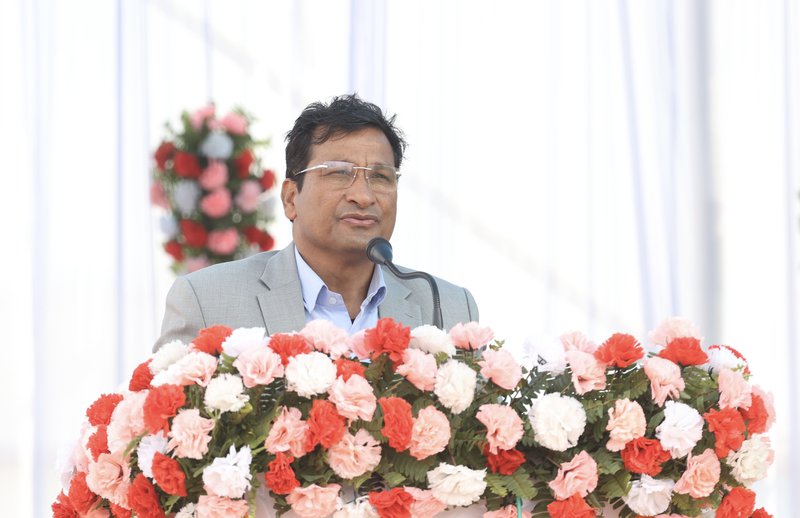
The Inaruwa sub-station, according to him, has become another huge electricity centre to supply electricity from east to west within the country and export to India besides regional power trade.
Moreover, the sub-station would significantly supply additional electricity to the industries within the Morang-Sunsari Industrial Corridor. The electricity generated from the Arun and Tamor Rivers and their tributaries would be linked to the Inaruwa Sub-Station through the Koshi Corridor 220 KC transmission line.
It may be noted that there has been a proposal to construct the Arun 'Hub' Inaruwa 400 kV transmission line. The Authority said that the Inaruwa Sub-Station has been built in such a way that it can be expanded in future.
Various factors such as inundation, the COVID-19 pandemic, prohibitory orders, and lack of timely availability of tools and technicians, among others, had adversely affected the sub-station construction process.
- 31 dead, 112 injured In One month of monsoon
- Jul 02, 2025
- Prime Minister Oli called for bold and urgent action to support the LDCs
- Jul 02, 2025
- Weather Forecast: Generally Cloudy With Light To Moderate Rainfall In Many Places
- Jul 02, 2025
- Prime Minister Oli And UN Secretary-General Discussed Issues of International Concerns
- Jul 01, 2025
- Nepal Airlines Corporation in 67 years
- Jul 01, 2025

